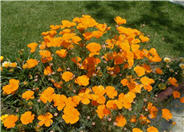
Common name:California Poppy, Golden Poppy
Botanical name:Eschscholzia californica
This small annual (sometimes acts as a perennial) plant will grow to less than 1' tall and has light, small blue green leaves with gold and orange flowers that bloom in spring and summer.
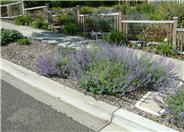
Common name:Catmint
Botanical name:Nepeta X faassenii
Nepeta faassenii makes soft, grey-green, undulating mounds to 1.5' high in bloom, spreading 3'-4' wide. The small leaves are attractive to cats. This perennial has lavender blue flowers in summer. Catmint can be planted in sun or shade and needs medium amount of water. Prune spent flowers to encourage more blooms.
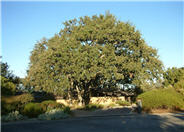
Common name:Coast Live Oak
Botanical name:Quercus agrifolia
The Coast Live Oak is an evergreen round headed tree. It can reach 15'-40' high and 20' wide; it grows very well from the coastal areas to the interior valleys. It is native to California, is drought tolerant, and attracts butterflies. -Cornflower Farms
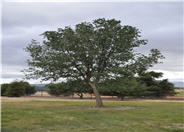
Common name:California Black Oak
Botanical name:Quercus kelloggii
The California Black Oak is a deciduous tree that grows 20'-60' tall. It has sharply lobed leaves which turn yellow to orange in the fall. The Black Oak is a California native, is drought tolerant, and attracts butterflies. -Cornflower Farms
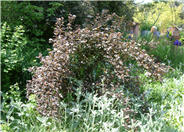
Common name:Diablo Purple Leaf Ninebark
Botanical name:Physocarpus opulifolius 'Diablo'
Diablo Ninebark is a small, dense upright shrub. The foliage emerges reddish green. White flowers open in late spring. One of the best performing reddish foliage plants for alkaline soils. Needs full sunlight. -Fort Collins Nursery
| Designer: Descanso Gardens | California Poppy Border |
Photographer: GardenSoft |
Soils and Compost:
Physical weed control, including mulching, or hand removal protects the watershed from harmful chemicals.
Water Saving Tip:
Check your irrigation controller once a month, and adjust as necessary.
Most plants require only one-third as much water in winter as they do in summer.
Integrated Pest Management:
Develop healthy soil for plants that are vigorous and naturally pest-resistant.

